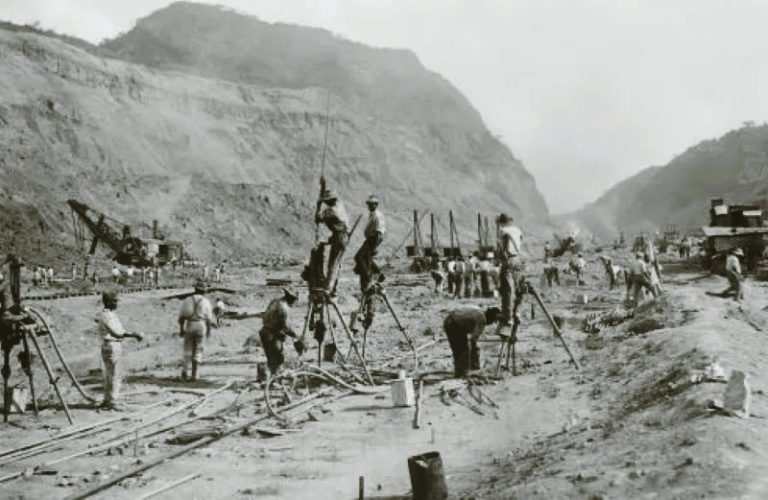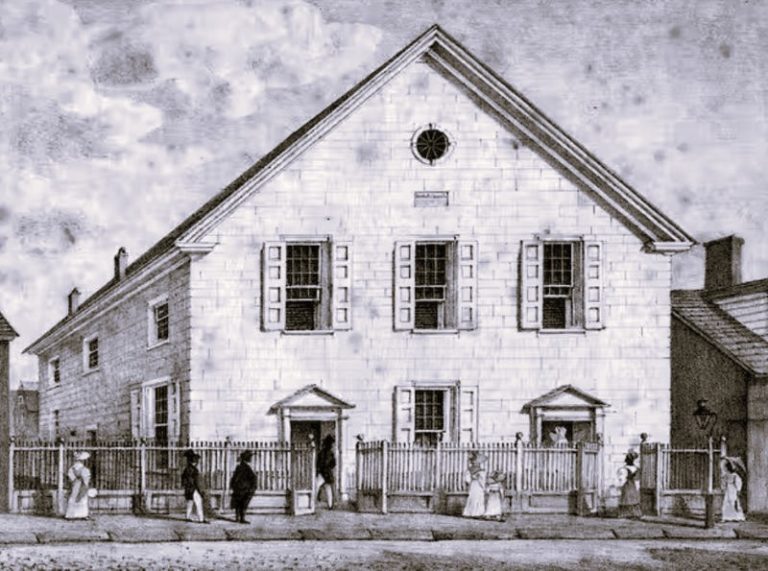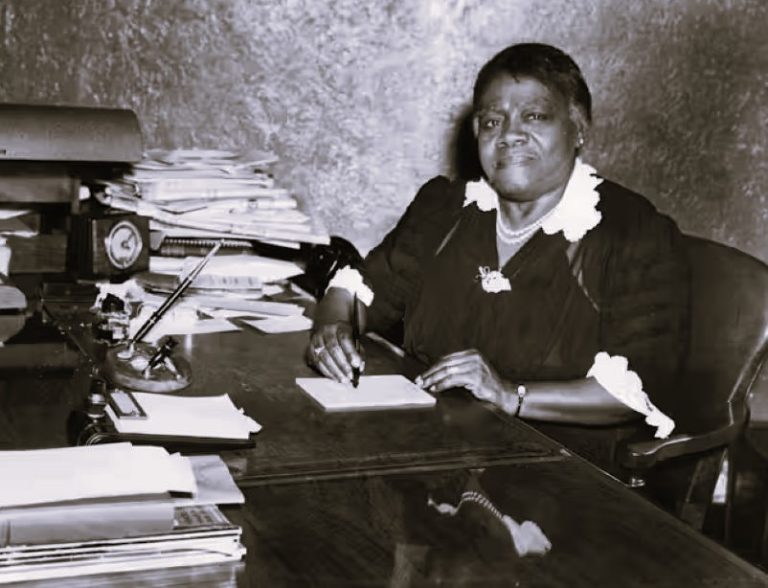
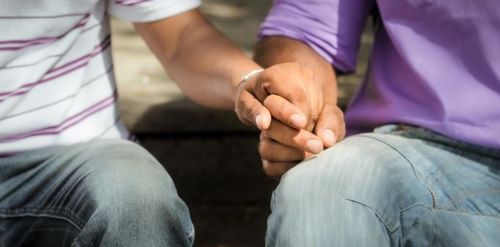
Contemporary gay life is marked by high levels of racism directed towards gay men of color.

By Dr. Chong-suk Han
Professor of Sociology
Middlebury College

By Dr. Kyung-Hee Choi
Professor Emeritus, Medicine
University of California, San Francisco
Introduction
According to Adam Isaiah Green (2008: 25), “modern urban life is increasingly characterized by specialized erotic worlds designed for sexual partnership and sexual sociality.” These erotic worlds, marked by high levels of interpersonal interactions between various actors, where individuals come to seek sexual and social partners, can be considered a “sexual field.” As Green (2011) argues, there are many diverse sexual fields where different constellation of traits comes to be seen as more desirable than other traits. Specifically for gay men, a slim hairless body may provide men who possess those traits with sexual currency at a “Twink bar,” but those same traits would have less currency at a “Leather bar,” where burlier bodies are considered more desirable. While a number of different types of sexual fields that can be found in the gay community have been discussed in the academic literature as well as the popular press, there has been less attention paid to the ways that erotic words are socially organized (Martin and George 2006). This lack of attention to the sexual organization of erotic worlds is particularly problematic given that much of an individual’s sexual life occurs within an erotic world that is “consistently patterned within and organized by particular communities, social networks, organizations, and meaning systems” (Ellingson et al. 2004: 5–6). More importantly, imagining erotic worlds as independent social arenas rather than a part of a larger organized social system, leads one to believe that they are self-contained erotic marketplaces where those who possess valued traits are on equal footing, regardless of larger structural factors. Yet as Green (2011) also noted, sexual fields are not isolated arenas, but are embedded within a larger society whose values are reflected in what is considered desirable within a given sexual field. Likewise, Whittier and Simon (2001) argue, sexual desires are often influenced by larger social constructions of race, ethnicity, age and class. Given that sexual fields do not actually exist in a vacuum, these constructions of race, ethnicity, age and class are likely to transverse across different sexual fields. In this empirical study, we offer an evaluation of the sexual field concept within a particular case by examining the sexual experiences of 35 gay men of color in the Los Angeles area. Specifically, we build on the sexual fields theory by examining one of the ways that larger structural factors, in this case race, may impact the micro interactions found within any given sexual field, demonstrating how sexual fields act as a part of a larger erotic structure that both represents and reproduces racial hierarchies. To do so, we bringing together the sexual fields perspective with the growing literature on sexual racism, an act of either sexually excluding non-whites as potential partners or including racial minorities as sexual partners based only on racial fetishes.
As several scholars have noted, contemporary gay life is marked by high levels of racism directed towards gay men of color by gay white men, with much of the racism manifesting itself as negative sexual attitudes towards, and sexual exclusion or fetishization of, non-white men (Armstrong 2002; Bérubé 2001; Epstein 1996; McBride 2005; Tenunis, 2007). After examining online personal ads and interviewing gay men, Robinson (2015) found that gay white men often exclude gay men of color as potential sexual partners while denying that their racial preferences are racist in nature. Instead, these men argue that excluding gay men of color as potential sexual partners is a “personal preference,” rather than racial exclusion. In fact, several studies have shown that gay white men were much more likely to prefer their own race and actively exclude non-whites as potential sexual than gay men of color (Lundquist and Lin 2015; Phau and Kaufman 2003; Rafalow, Feliciano, and Robnett 2017; Smith 2014).
Despite gay white men’s insistence that sexual exclusion was not racism but rather personal preference, and that these personal preferences have nothing to do with racism, Collander and his colleagues (2015) found that attitudes toward sexual exclusion were related to almost every identified factor associated with racist attitudes in general. More importantly, the authors found that even gay white men who do not actively engage in acts of sexual exclusion were incredibly tolerant of racist behaviors from other gay white men who did. Thus, sexual racism should be understood not as personal preference, but as “problematic conditions that structure the very formation of romantic relationships” that is neither benign nor trivial (Bedi 2015: 998).
While the idea of sexual racism has been widely discussed in the popular press, and academic studies have also documented the racial hierarchy of desire in the gay community, there have been fewer attempts to systematically examine how such racialized hierarchies of desire are understood by gay men of color and, more importantly, the impact these racial hierarchies have on them. In this paper, we attempt to address both sexual racism as it is experienced by gay men of color and examine the consequences that sexual racism has on members of these groups. First, we demonstrate that gay men of color understand the racialized nature of the gay sexual field of desire. More importantly, we show that racialized sexual desires have negative consequences for members of these groups. At the same time, gay men of color are not simply “victims” of sexual racism. Instead, they attempt to define what it means to be a racial minority and actively confront sexual racism.
Examining the sexual fields perspective through the lens of sexual racism allows us to better understand how larger social structures influence and impact the ways that seemingly “personal” desires are rooted in a larger system of racial hierarchies and racial beliefs. More importantly, we take a que from Holland (2012) by arguing that sexual desire cannot be understood without thinking about race, nor can racism be fully examined without grasping the role that sexual desires play in maintaining racial hierarchies. By bringing these two perspectives together, we expand on both the sociological literature on sexual desire and the literature on racial hierarchies. Doing so, we demonstrate that intimate encounters are often dictated by larger racial structures and that larger racial structures are maintained through intimate encounters.
Sexual Fields

According to Green (2011: 251), a sexual field is easily identifiable based on a number of characteristics. First, within a sexual field, “patterns in ‘hooking up’ systematically favor certain individuals or groups over others.” In addition, favored individuals or groups are easily identified in the interaction order by members of the field. Within a sexual field, individual actors bring differing levels of sexual capital with which they negotiate the field, but the sexual capital available to them are not so much individually possessed but embedded within larger societal values that assign more social worth to certain characteristics. Within a sexual field, six key interactional processes occur, including:
(1) Actors’ recognition that the sexual field is constituted by a set of relations anchored to competition and sexual selection; (2) the perception of a generalized other within the field, including knowledge concerning a given field’s collective valuations of sexual attractiveness; (3) a formulation of one’s own position within the sexual status order vis-à-vis intersubjective feedback and the development of a looking-glass self; (4) an assessment of others’ positions within the sexual status order; (5) knowledge of the “game” – including how to conduct a successful self-performance, the construction of an optimizing front and proper filed-specific demeanor; and finally, ideally, (6) the ability to “save face”
(Green 2011: 244).
Put simply, sexual desire within any sexual field is based on a hierarchy of desirable traits with some individuals possessing more of those traits than others. Within any sexual field, some individual come to be seen as more desirable than other individuals depending on the traits that they possess that are valued by the specific sexual field in which they operate.
In discussing gay sexual fields, Green (2008; 2011) identifies a number of potential traits that influence the level of desirability that any given individual might possess. While age, class (or at least the presentation of class through clothing, consumption patterns, etc.), type of body, etc. all are forms of sexual currency that become more or less valuable depending on the social setting, race seems to cut across gay social locations. For example, he notes that within a leather bar, the murals of “very masculine looking, muscular, hair, 30- and 40-something white men clad in black leather chaps and boots,” might imply that those are the men that are deemed most desirable by the bar’s patrons while the posters of “20-something, shirtless, muscular, hairless men in athletic shorts, jockstraps, and similar attire,” at the “sports bar” might do the same for the sports bar’s patrons. According to Green, “the representations of sexual desirability in these two bars communicate distinct structures of desire that favor distinct classes of sexual actors.” Yet as noted earlier, sexual fields are not isolated arenas, but are embedded within a larger society. Thus, what is considered desirable within any given sexual field also reflect larger social views regarding race, ethnicity, age, and class. As evidenced by Green’s own accounts of his field work, and the statements made by participants in his study, race plays a pivotal role in defining attractiveness and desirability across various sexual fields within the gay community. Whether the specific field in question is a gay leather bar or a gay sports bar where different types of dress, different amounts of body hair, etc., may be deemed more desirable, race remains a consistent, and constant, marker of desirability. While interesting, it is not very surprising given that race has always played a critical role in the construction of desire and desirability (Nagel 2003). In fact, desire for whiteness has been noted by a number of scholars examining race and racism in the gay community (Callander, Holt and Newman 2016; Han 2007; Robinson 2015; McBride 2005; Teunis 2007).
Unlike other characteristics identified by Green, such as clothing or muscularity, whiteness is a central organizing principle in the gay community (Bérubé 2001; Han 2007). In promoting equality through the normalization of (homo)sexuality at the expense of “non-gay” issues, gay organizations such as The Human Rights Campaign promote a monolithic image of the “gay community,” as being rich, conservative, and white (Bérubé 2001; Phelan 2001; Seidman 2002; Walters 2014). The centrality of whiteness as the organizing principle in gay life leads to the creation of a gay marketplace of desire where whiteness has a value, in and of itself, in sexual exchange (McBride 2005). We would argue that the value of whiteness transcends diverse sexual fields within the gay community that acts as a universal currency that supersedes all other characteristics deemed worthy within any given sexual field. Thus, it isn’t enough for one to wear the appropriate clothes or possess the ideal muscle mass, if the clothes and the muscles aren’t framed over a white body. The fact that race is a marker of desirability across gay social spaces is not a trivial matter. As Peter Jackson (2000: 184) notes:
When desirability is linked with race, and when certain races are ascribed greater erotic interest than others, then to be a member of an “unsexy” ethnic group is to be equated with an inferior form of existence.
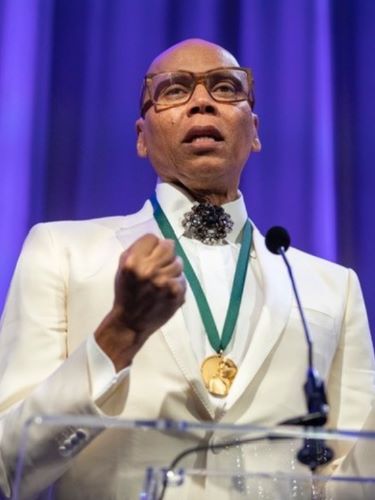
More importantly, unlike other markers of desirability among gay men that Green discusses, such as amount of body hair, muscularity, clothes, etc., race is an entirely ascribed status, not an achieved one. Even age and social class, to some extent, can be thought of as an achieved status as some of the men that Green interviewed openly talk about how they would change their self-presentation as they grew older or use different types of clothes to signal a different class aesthetic (Green 2011). In some instances, even the traits deemed desirable within a sexual field can be negated by race. For example, Han (2015: 141) quotes one gay Asian man, who attempted to make himself more desirable in the gay community by changing his body through exercise, as stating:
I had muscles where I didn’t think you had muscles. I looked really good, I was down to 2 percent body fat, and every muscle in my entire body was obvious… I used to go to West Hollywood where the non-rice bars were and I could count on both hands how many times I got picked up or I could pick up, actually went to bed with somebody from a non-rice bar. It was horrendous. If I went by myself I was standing in the only empty area of the entire god damn bar. I used to have a 10-foot area around me and people would avoid me, I couldn’t believe it.
So while muscularity may be the desired trait in a “muscle bar,” the lived reality for gay men of color is that their attempts to develop or acquire the currency of desire within those specific gay spaces, or sexual fields, is negated by their race. Put simply, across different sexual fields found within the gay community, race seems to trump all other characteristics. Not only are men of color considered less desirable, but white men who prefer men of color as sexual partners are often considered to be somehow deficient by other gay white men. Labels like “rice queen,” a term used to describe a gay white man who prefers Asian men as sexual partners, is considered by many to be a derogatory insult (Jackson 2000). Because sexual fields exist within a larger society where race and racism are embedded in collective values and hierarchies, racial desires represent and reproduce the larger society’s collective beliefs about race. Thus, supporting Holland’s claim that race is central to sexual desire (Holland 2012).
Certainly, social and virtual sites where race itself is the sexual currency exist. Within these spaces, men of different races interact primarily for the purpose of meeting other men of a specific race. For example, in groups such as Long Yang Club and Black and White Men Together, race itself is the organizing principle of sexual interaction. While there are racial nuances to these groups that make them more than simply another sexual field, particularly Black and White Men Together that have a history of attempting to counter racial fetish as well as promote racial justice, members of these groups nonetheless initially join for the purpose of meeting men of a given race, not those who share similar tastes in clothes, have similar body types, or display similar gender presentations (Crockett 2016). Race has sexual currency precisely because it is the sexual “product” being consumed (hooks 1992). Yet, as Han (2015) has demonstrated, even these spaces are often sites where whiteness has more currency. When white men are seen as being “lacking” or few in number, these groups often fail to maintain themselves. It is a sexual marketplace only in the sense that white men bring the currency of whiteness to “purchase” non-white sexual partners. Thus, white men continue to have the upper-hand in sexual negotiations. More importantly, when gay men of color are sexually preferred by gay white men, they are preferred not as individuals but because they fulfill racial stereotypes regarding sexual behaviors (Wilson, valera, Ventuneac, Balan, Rowe and Carballo-Dieguez 2009). Thus, gay men of color are only sexually desired if they fulfil the racialized sexual fantasies of white men. One way to address this particular limitation in the sexual fields approach is to examine the perspective using a sexual racism lens. Doing so will allow us to examine the ways that micro-interactions that occur within sexual fields are influenced by the larger macro-structures of race and racism.
Sexual Racism
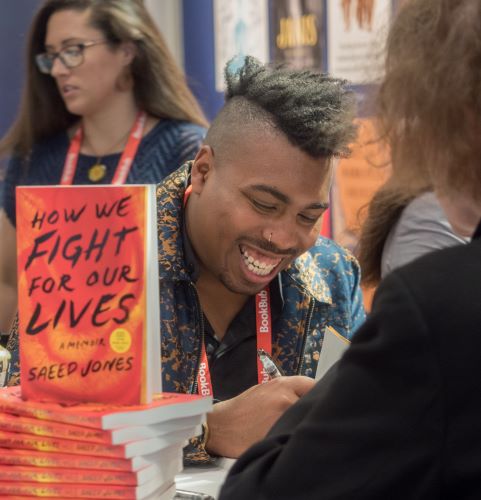
The concept of sexual racism was originally developed by Charles Herbert Stember in 1976 to examine racialized sexual desires between heterosexuals, the deep rooted sexual stereotypes of black women and men that lead to such desires, as well as the role that such stereotypes play in preventing interracial relationships. While still utilized by a number of contemporary scholars to examine racialized sexual stereotypes of black men and women (Buggs 2017; Stevenson 1994; Yancey 2002), the concept of sexual racism has been particularly useful in in examining sexual exclusion of gay men of color as potential sexual partners, as well as for examining the sexual objectification of gay men of color, by gay white men. At the same time, the use of the term sexual racism to explain sexual exclusion or objectification based on race has not been without controversy. Some commentators and gay media outlets have argued that sexual desires for one race, and/or sexual exclusion of another race, is not racism but personal preference, while others have argued that excluding an entire race of people as potential sexual partners is, indeed, a racist act. At the very least, the actual practice of publicly declaring racial preferences has been fraught with racist sentiments. For example, several commentators have observed that gay white men, and to a lesser degree gay men of color, practice sexual racism on gay dating apps such as Grindr and on online dating sites (Callander, Holt and Newman 2015; McDade 2005; Paul, Ayala and Choi 2010; Robinson 2015; Smith 2017). Not only do gay white men specifically note that they are not sexually interested to gay men of color, many make degrading and racist comments to demonstrate their “preferences.” For example, the website Douchebags of Grindr collects various personal profiles from the mobile application Grindr, the most popular application used by gay men to find nearby sexual partners. Grindr includes a function called blocking which allows users to prevent other users from sending them messages. Some of the profiles written by gay white men include statements such as “I block more Asians than the great wall of China,” “Squinty eye, no reply,” and “I don’t speak Ebonics.” Similarly, on the dating websites OKCupid, Manhunt, and Adam4Adam, derogatory comments such as, “I don’t like Asians, I like big cocks,” or “How many times do I have to tell black guys that I don’t like chocolate?” are common. Thus rather than a way of simply listing their preference for white men, online sites for seeking sexual partners have delved into venues for gay white men to vocalize their racist beliefs.
But sexual racism is more than simply excluding members of a racial group as potential sexual partners or objectifying them as sexual others even when they are desired. Whether one is sexually excited or left frustratingly flaccid by someone of another race is among the most trivial of concerns. What is important is that deeply embedded in those stereotypes about sexual attractiveness and sexual prowess that lead to one’s seemingly personal sexual preferences is a very public distortion of the sexual worth of one group and the sexual bankruptcy of another that has roots in the larger system of racial maligning of minority groups deployed by the dominant group, specifically for the purpose of promoting racial segregation, both structurally and culturally.
In his book Boystown, Jason Orne (2017: 67) defines sexual racism as “a system of racial oppression, shaping an individual’s partner choices to privilege whites and harm people of color” that manifests itself structurally, culturally, and interactionally. First, structural sexual racism limits the availability of partners within the social environment. While this can involve physical segregation of gay men of color and gay white men into different social locations, structural sexual racism also includes marginally integrated “mixed bars,” where gay men of color and gay white men occupy different areas of the establishment. Cultural sexual racism involves the creation and maintenance of patterns of social and sexual interactions based on racialized sexual stereotypes that lead to objectification of men of color as well as the culturally constructed definition of who is “hot.” Finally, interactional sexual racism involves the active discrimination against members of minority groups. While some are overt such as statements such as “no fats, no femmes, no Asians,” on online dating apps, interactional sexual racism also includes more subtle actions such as bars changing music or enforcing dress codes to limit the number of men of color or gay white men “warning” other white men to avoid certain clubs based on the race of the clientele. These three dimensions of sexual racism operate to not only construct white men as being more desirable but also construct men of color as being less desirable, and therefore, socially undesirable as well. For Orne (2017: 62 and 54), sexual racism contrasts sharply with his concept of a sexy community, a “queer radical community with people of different races and bodies coming together” that help to connect “people across boundaries such as race.”
However, as noted above, these racial preferences are rarely understood as racial exclusion. Instead, they are explained as personal preferences (Robinson 205). It is in the ability of sexual racism to hide, under the guise of being a personal preference, rather than be exposed as part and parcel of the larger system of racial oppression, which depends on constructing one race as fundamentally inferior to another, where the true danger lies. However, gay white men are given a cover, masking their racist actions as personal preference or personal taste. Yes, sexual preference for a certain race does manifest itself as a personal taste in a certain “type” of man on the individual level. Yet to borrow a quote from Susan Sontag (1972: 38), “the rules of taste reinforce structures of power.” It isn’t simply that white men are considered more desirable in the gay community, but that there is a pattern of preference for white men, even among gay men of color, that hides the larger structures of power that places a premium value on whiteness. For example, in a recent study by Rafalow, Feliciano, and Robnett (2017), the authors find that gay men of color, as well as lesbians of color, are much more likely to exclude members of their own race as potential sexual partners than gay white men or white lesbians. More importantly, men of color who state a sexual preference for another race are overwhelmingly likely to prefer white men with 97 percent of Asian men, 90 percent of Latino men, and 88 percent of black men stating a preference for white men. As the authors’ note, these racialized preferences seem to be the result of larger structures of power and racialized beliefs rather than personal preferences.
In addition, sexual racism is also implicated in the creation and maintenance of gay sexual fields as “white spaces,” further marginalizing gay men of color. For example, as Ocampo (2012) found in his ethnographic study of gay Latino men, “gay” spaces, as well as the aesthetics of those spaces that make up a sexual field, is perceived by gay Latino men to be an unwelcoming environment for non-white gay men. More importantly, the men in his study note that presenting oneself, through clothes and manners, in a way that is counter to “white norms,” carried an even greater risk of exclusion from certain venues, and even police harassment, in gay neighborhoods. In fact, gay venues are actively made and kept white through deliberate and conscious decisions by businesses and gay community leaders through an active promotion of whiteness as the norm (Han 2007; Ocampo 2012). Given these findings, applying a sexual racism lens to the sexual fields approach provides us with an opportunity to explore the ways that sexual fields are actively created and maintained by members of a dominant group in order to create hierarchies of sexual desires.
Data and Methods
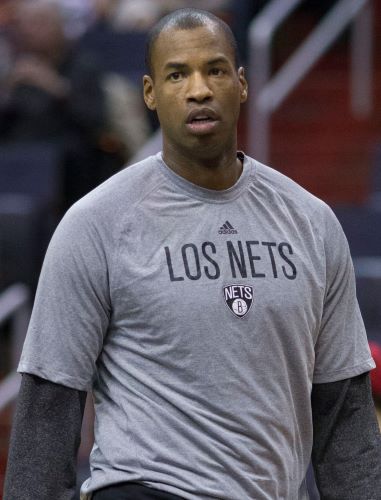
Data for this study came from 35 interviews conducted between December 2005 and August 2006 with gay men of color during the initial development phase of the Ethnic Minority Men’s Study. This is a larger quantitative study designed to examine the impact of discrimination, sexual partnership, and social networks on sexual risk behaviors among gay black, Latino, and Asian Pacific Islander American men in Los Angeles, CA. Individuals were recruited from a variety of sources, including organizations that target members of these groups, gay newspapers, and notices placed in venues frequented by gay men. A theoretical sampling frame was used to ensure diversity among participants. Inclusion criteria included (1) being at least 18 years old, (2) self-identified as black, Latino, or Asian Pacific Islander, (3) being proficient in English, (4) reporting at least one male sex partner in the past 6 months, and (5) residing in Los Angeles county. The interview sample included 12 black men, 11 Latino men, and 12 Asian Pacific Islander men. Sixteen men were between the ages of 18–29 years old, 19 were 30 and older. One of 11 Latino men and 9 of the Asian Pacific Islander men were foreign-born. All black men were born in the United States.
Using knowledge gained from focus group meetings during the initial phase of the larger research project, an interview guide was developed to explore gay men of color’s personal experiences with their families, communities of color, the larger gay community, as well as sex and dating. Questions were designed to allow participants to provide small description of their lives rather than elicit short, blunt answers. Interviews were transcribed in verbatim and are presented in verbatim. Although the data were collected in 2005, the themes we uncovered have proven to be timeless in that sexual racism is a recurring topic in both the mainstream and gay media. In fact, with the advent of social media and dating apps such as Grindr, that has come to facilitate convenient sexual interactions between gay men, the themes we have identified seem to have become more, rather than less, salient. More importantly, “whiteness” in the gay community has become more central within the past decade rather than less as the “gay rights” movement has come to increasingly rely on whiteness to normalize queer relationships (Walters 2014).
We analyzed the data using a modified grounded theory approach as outlined by Corbin and Strauss (1990). We began by examining the stories that men told and engaged in open coding by inductively identifying the concepts the men discussed in describing their experiences being both gay and a person of color, paying special attention to the way they discussed sexual desires. After identifying a number of key concepts, we grouped the concepts into categories then engaged in axial coding to determine the relationships between the various concepts that were identified during open coding. Finally, we narrowed the concepts into larger themes which are presented below. In terms of sexual desires, we found four large themes, (1) the understanding of whiteness as universally desirable, (2) ways that gay men of color negotiated racialized sexual spaces, (3) impacts on gay men of color due to sexual racism, and (4) how they attempted to confront sexual racism.
In presenting the results, we were guided by two principals to ensure that quotes represented both the breadth and depth of our themes. First, we ensured that we used quotes from at least half of the participants from each racial group. In addition, we ensured that we used at least one quote from each racial group for each of the four themes. In this way, we were able to demonstrate that the themes we discovered were not only widely shared but also shared across racial groups.
Findings
The Undoubtable Desirability of Whiteness
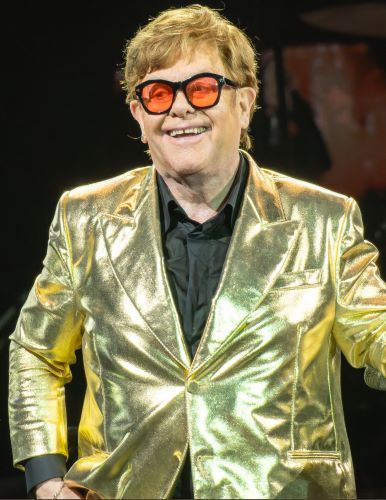
In discussing what constitutes desirability in a given sexual field, Green (2011) observed that favored individuals or groups are easily identified by participants within the sexual field. Gay men of color clearly understood that race was a central characteristic in the way that gay desire is organized. More importantly, they recognized that being white afforded white men with more opportunities for sexual contact than gay men of color. When asked about looking for sex online, one gay Asian man noted:
Caucasian tend to work very well for many people and there’s very few people that say “no whites.” You know, some do say “no whites” but it’s very rare compared to other ethnicities… You almost never fail to be a Caucasian… But for ethnic people, there tends to be more bias. Like you see a lot of places “no Asians” or “no blacks” or “only attracted to whites and Latinos” and stuff. And it’s everywhere.
(031A)
As the man quoted above shared, white men were seen as being universally desirable among gay men. As he noted, white men were sexually desired not only by other white men, but by men of color as well. More importantly, the desire for whiteness was said to be “everywhere,” not just limited to specific venues or websites.
Similarly, gay men of color also understood that not being white made them less desirable to potential sexual partners, even other men of color. As one gay Latino man stated:
It’s like the more European that you have, the better off you probably are. And then the more like indigenous you look, it’s, it’s not the same. It’s different so, I think there’s a definite preference… I’m convinced that I probably inherited more of one, like my mother’s side of the family, which has Zapotecan Indian grandmother, great grandmother at one point, so my, that definitely expresses itself in the way that I look. I feel, like, so it’s kind of a source of insecurity.
(034L)
Thus, sexual exclusion of gay men of color by gay white men is not about place of origin or differences in cultural values. Instead, it is specifically about how one looks and the more one looks “European,” the more one can be successful in the sexual field. The more one looks European, or white, the more one is accepted regardless of other potential factors that may make white men perceive men of color as less suitable sexual partners. As demonstrated by the quotes above, gay men of color understood that whiteness was the currency that held collective valued.
Also, there was a recognized racial hierarchy among non-white men. Gay men of color were aware of the racial hierarchy within the gay community and knew where to “place” themselves within that hierarchy. For example, the man quoted above went on to state:
Well, I figured, I realized that my situation wasn’t as bad. It sounds terrible, but I, you know, you always have to think about black gays, and I think their situation is probably a hundred times worse than mine… you reassure yourself by looking at other people and sort of recognizing the racial hierarchy and kind of establishing where you fit in that.
(034L)
This isn’t to suggest that the nuances of the racial hierarchy were widely shared by gay men of color. Instead, many men, based on their own personal experiences with dating, put their own race at the bottom. In discussing the racial hierarchy, a gay Asian man stated:
I guess there’s a social hierarchy in, sexually, in our community and where certain ethnic groups or racial groups are still seen as the model ideal, you know, form of beauty and Asians definitely not the top. It’s more towards the bottom, you know, if not the bottom…. So that totally feel, you know, I feel marginalized already there in the sexual market, you know, the sexual community.
(004A)
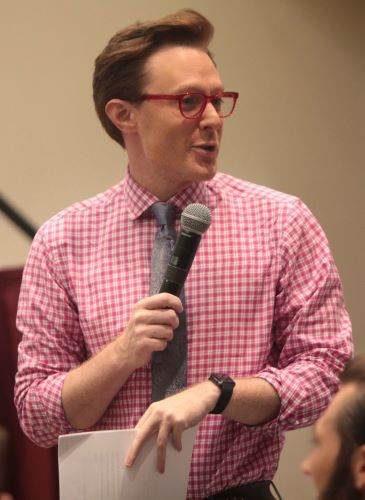
Other men were more diplomatic in not placing non-white men into specific rankings where one group of gay men of color was above another. However, they were all nonetheless well aware of the primacy of whiteness in sexual attraction. For example, a gay black man stated:
Like if you were to go to like Micky’s or Rage in West Hollywood, you don’t see too many black people. If you do, they’ll like hug up on white guys. And nothing wrong with that, you know. You like what you like. But, you know, if you’re black you wouldn’t go to West Hollywood looking for a black guy, you know. You’d go to one of the little black clubs or bars they have, the few they have and hope you find something decent.
(006B)
The man quoted above understood that mainstream gay spaces were organized largely to cater to white desires and whiteness was the currency of desire within these spaces. As he noted, gay men of color within mainstream gay spaces were also there seeking white sexual partners. For those whose desires ran counter to the dominant narrative of racial desirability, opportunities for sexual contact were much more limited.
Interestingly, for many gay men of color, race became an issue only after becoming more involved in the gay community, testifying to the power of the sexual field to dictate desirability as well as how gay men come to see themselves as sexual beings. For example, one gay Asian man who grew up in Phoenix, where he was one of only five Asians in his school, had this to say about his first experiences in the gay community:
And at the time, the fashion was, “the fashion,” meaning not just clothing but the whole, the public taste in the gay world, and the kind of what was en vogue then, was this very white, preppy, Ralph Lauren image. Literally, I mean with you know, the Izod shirts and the Topsiders, and so I felt out of place… But I mean, I remember feeling like I needed to conform to that. I remember feeling like, you know, I remember being very aware that my general look and everything was not what was en vogue.
(026A)
Although the man quoted above was largely focused on “fashion,” he went out of his way to note that the “fashion” included not only what one wore, but the whiteness associated with what one wore. Later, he went on to explain further using Abercrombie and Fitch as an example of how fashion that is valued in the gay community is marked by whiteness. Thus, the “‘gay look” that comes to be equated with “fashionable” and, therefore, desirable, is not only available to whites but comes to be equated with white men.
For some gay men of color, learning that their race was not valued in the gay sexual field was a gradual development. For example, another gay Asian man responded:
I don’t think I was probably conscious of it for a long time. I think it was probably, I just attributed it to people online, flaky. But then it became obvious, you know? Asian was the key word that made a lot of people, probably at least half the people online, just stop talking altogether. I think it’s really, I don’t know, it’s really saddening that in a metropolitan city in our current times that that still happens, but I think it happens just as much as ever. I think there’s just so much racism, maybe not as overt but I think it just shows that racism changes, manifests in different ways.
(007A)
This growing awareness that their race made them somehow less “valuable” to other gay men placed gay men of color in a disadvantaged sexual position. For many, this meant learning to navigate the sexual terrain despite the racial hierarchy of desire that they encountered.
Learning to Play the “Game”
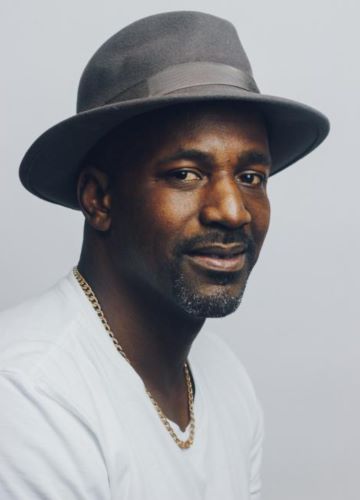
One result of the participants coming to understand what is considered desirable within any sexual field is that participants come to learn how to navigate within the field in order to gain access to those who possess those desirable attributes. That is, as Green (2011) noted, participants within the field learned how to play the “game.” In addition, many of the men realized that playing the game involved possessing physical characteristics that are stereotypically associated with members of their racial group. As one black man stated:
You know, the black man myth, you know. You know, it’d better be big, you know, you’ve to big lips and big, big feet. You’ve got to be, you know, have a really big dick. Oh, he’s got a big one, you know, a lot of different things like that.
(025B)
Men realized that possessing certain physical traits made them more desirable to some gay white men who fetishize men of color. At the same time, simply possessing physical traits associated with members of their group was not enough.
For many of these men, playing the game involved meeting the sexual expectations, in terms of sexual behavior, of gay white men. As one gay Asian man noted:
That’s usually what people expect of me, is I’m going to bottom. You know. I will top somebody, if they want me to, I’m not opposed to that at all. But generally speaking, you know, people are usually wanting me to bottom… It’s like, and probably other minorities are this way, too. I mean, it’s just, you know, it’s not rocket science, it’s like minorities are used to you know, having the crumbs, you know, or being offered the crumbs. You know, they don’t speak up, they don’t protest, you know, if they don’t like something. They feel like particularly where, you know, it’s a white person involved, that they need to acquiesce to that person. And I felt that way, and I would say that most minorities feel that way, if not nearly all.
(026A)
As can be seen from the above quote, the racial dynamics in the gay community influenced how gay men of color interacted with gay white men. Because gay white men were considered more desirable, therefore possessing more “worth,” they were viewed as having a stronger bargaining position when it came to sexual activities. When gay men of color could not fulfil white expectations, they found themselves at a disadvantaged position in the gay sexual field. As one Latino man noted:
You know, it’s just the whole image of that [machismo], it’s just hard because people who like Latins and stuff like that, that’s what they see, that’s what they want. And when you can’t deliver that, it’s, you know, it’s, they don’t like their bubbles being burst.
(005L)
When asked to elaborate, the man quoted above added:
Most white people tend to have like this fixed image of what a Latin person should be or do or act. Yeah, like it’s, you know, like the whole penis thing is kind of funny. You know, people think that all Latins have like this huge penis and stuff like that, you know, and it’s like no, we’re people. It’s pretty much average like everybody else unless you meet someone who’s just exceptionally large, you know. And they get really disappointed when, you know, they don’t see that on you. So God forbid if a Latin person had his, like, foreskin cut off. Then that would like really freak them out.
(005L)
As the above participant noted, the inability or the unwillingness to fulfill white male sexual fantasies about men of color made it difficult for him to find sexual partners. Thus, gay men of color unwilling to play by the rules of the game found themselves unable to find sexual partners within the gay sexual field.
Gay men of color also understood that in order to secure a white sexual partner, men of color needed to fit existing racial stereotypes about men of color. After describing the gay community as being unwelcoming to gay black man, one black man had this to say about the type of black man that might be better accepted by gay white men:
Now if you happen to be a big black masculine guy with maybe a big black dick then yeah, maybe they maybe more accepting, maybe might like you or whatever. ‘Cause gay men across the board seem to have issues with feminine guys and, you know, stuff, stuff like that.
(029B)
Clearly, gay men of color understood that only some men of color, those who fit the stereotypes imposed on them by white men, were considered to be desirable. And even then, only to a small subgroup of gay white men who were specifically attempting to fulfil fetishized sexual desires.
But for gay men of color, playing the game also comes at a cost. For example, once the sexual fantasy was fulfilled, many gay men of color noted that their utility became less for gay white men. As one black man stated:
One of the learning experiences that kind of brought me to a place of, you know, not running after a relationship… there’s also been other situations where, you know, maybe I’ve had sex with someone and after I’ve had sex with them, there’s an avoidance or just a, there’s a look, it’s, you know, almost as if a fantasy might be fulfilled for them but as an individual, you know, that’s what they wanted, that’s all they wanted, and they’re done, you know.
(025B)
Clearly, gay men of color were placed in a difficult situation in navigating the gay sexual field. On the one hand, the desire for whiteness marked them as less desirable than white men. At the same time, gaining access to the sexual field, and the white men within that field, involved fitting the very same stereotypes that led to them being excluded by other gay white men who did not hold the same types of racial fetishes. Unfortunately, even when gay men of color managed to fulfil gay white racial fantasies, they found themselves discarded when the fetish was fulfilled.
Impact of Sexual Racism on Gay Men of Color
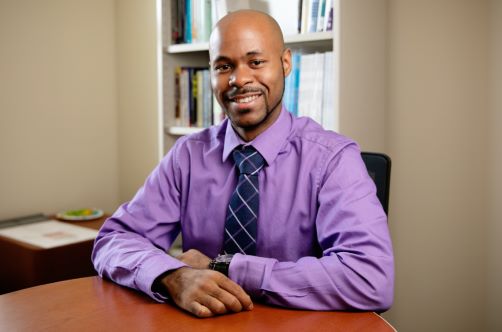
As discussed above, the sexual field is not a neutral playing field where individual preferences determine who is valued and who is not. Because some characteristics are valued over other characteristics, individuals are accorded varying levels of worth based on the larger collective beliefs about which characteristics are desirable and which are not. Not surprisingly, this hierarchy of desire leads to negative consequences for those who are seen as being less desirable. One of the most negative consequences for gay men of color was a feeling of marginalization in the larger gay community. As one gay Asian man stated:
Frustrating, you know, if I’m online and people just, you know, see that I’m Asian and they just bypass me or in the sex club they just walk by me without looking or without acknowledgement, you know. So I feel marginalized, I feel isolated, I feel, you know, yeah, not wanted.
(004A)
The sense of feeling unwanted and marginalized was repeatedly expressed by other gay men of color. More importantly, it wasn’t just the sense that they were not being acknowledged by gay white men but rather that the entire atmosphere of “gay” identified spaces was seen as being unwelcoming to men of color. For example, when asked to expand on why he felt unwelcome at gay bars, one gay black man stated:
If you’re a black, if you’re a black gay man and you’re out, you’re out of the closet, you, you don’t feel accepted by the white gay community because for the most part, white men are into white men. I live in West Hollywood and I don’t feel as if, do I, do I feel like that’s, that’s my community? No, that’s my neighborhood, I live there. But that’s not my community.
(029B)
For some of the men in our study, the feeling of exclusion was based on both race and perceived social class. When asked to describe a specific situation when he felt out of place, one Latino man stated:
Maybe because I’m not wearing, you know, the right type of clothes or I don’t look exactly like the mold that, you know, is dancing at the party. They’re tall, you know, blond and blue-eyed or tall, you know.
(010L)
For the man quoted above, his feeling of alienation had to do with both not being blond and blue-eyed as well as not wearing the “right type of clothes.” Given the atmosphere of the gayborhood and the businesses found within the gayborhood, many of the men stated that they often avoid being in the area at all. The tendency to avoid West Hollywood was found across all racial groups and relatively widespread, leading to further alienation for gay men of color.
Given the centrality of race to the way that they are treated within the gay community, gay men of color spent a significant amount of time thinking about sexual racism in the gay community. As one Latino man stated:
Well, I’m preoccupied with racism, I think. And very jealous and very bitter about a lot of stuff in my life. I felt I missed my youth. I felt I never really had the sort of sexual appeal that is often associated with youth so a lot, a lot of problems that I’ve experienced have sort of stemmed from that I think. It’s anger, bitterness, resentment, all that sort of thing… I just became kind of obsessed with it, you know, to what extent does my race have something to do with my failure to date people that I want to date? Yeah, it’s been a recurring issue.
(034L)
Ironically, sexual racism made it difficult for gay men of color to develop connections to other gay men of color. As one gay black man stated:
And it’s like if you do see another black person, normally I guess there’s some unwritten code that if you’re black, you know, you just speak to another black person just ‘cause you’re black, you know? But it just seems like in West Hollywood that unwritten code doesn’t stand. You might see a black person in a club and you might speak to them. For whatever reason, they might not speak back but, you know.
(032B)
When asked to describe his experiences with other Asians, a gay Asian man stated:
I don’t associate with Asians too much. Like, I only have about three Asian friends. Like, I talk to them in good terms and stuff. So, and plus, with the Asians, I don’t usually, if I happen to be in the community, I don’t usually just come out because my preference is not Asian so then it’s no big deal for me.
(019A)
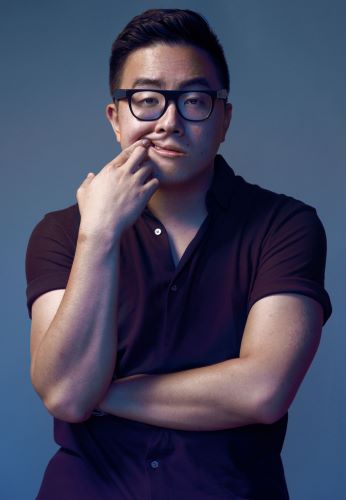
As the man quoted above indicated, not finding other Asian men attractive led to him having minimal contact with other gay Asian men. Ironically, many of the men discussed how they were different from other gay men of color with some arguing that they have a difficult time finding sexual partners because they did not fit the stereotype for their race.
The negative experiences of gay men of color with sexual racism placed gay men of color in a difficult position in terms of dating. While many stated a sexual preference for white men, they also questioned the motivations behind the white men who showed interest in them. As one gay Asian man stated:
Or, you know, like people who want Asian only, you know. Are they asking for someone who, just because they love Asian cultures, or because — or they like the Asian body, you know, the type of feel to it, or is there more than that, you know. Are they looking for someone who’s submissive, are they looking for someone who they can push around or are they looking for someone that they can, you know, showcase, you know, or something like that? You know, so I want to have a better idea of where they’re coming from before, before I want to meet — before I meet up with them.
(004A)
This shared sentiment that white men who were exclusively attracted to men of color were less desirable than other white men was widely shared among gay men of color and traces back to the way these men are also seen by other gay white men. Because the white men who specifically sought out men of color as sexual partners were seen by other white men as somehow “lacking,” they were, for the most part, the least desirable white men.
Ironically, gay men of color came to hold similar views of other racial groups. For example, one gay black man had this to say:
I hate to say this but I think certain races or I think certain races, as far as sex-wise, are known to be more open to trying new things or to play certain roles. And I want to say like ok, Asians, maybe they’re viewed as being like submissive. And so like if you’re a top or whatever you know, you want somebody down. You want to find you an Asian ‘cause you know they’ll submit to you, and if you’d like somebody that wants to do everything, go find you a white boy. You know, white people, they do it all, you know. You know, that type of stuff. And you know, black people, you know, well, I guess they’re just freaks. You know, they’ve got big dicks and they do whatever they do and you know, that type of stuff, you know, crazy stuff.
(032B)
Because of these beliefs, gay men of color were also less likely to express a preference for other men of color, including members of their own race, further limiting their options. When asked to describe the type of men he finds attractive, a Latino respondent stated:
Well, I guess I prefer someone around my age or older. And then Caucasians and Latins. I don’t go for Asians or for African Americans. I’m just not attracted to ‘em… Latin people, I’ve noticed, I don’t know if I should speak on it, but tend to get together maybe as a second resort… So I’ve only dated like white guys and no African American people.
(038L)
In fact, when asked about their own sexual attractions, very few of the men indicated that they preferred members of their own race as sexual partners while many stated a preference specifically for white men. This was surprising given that many of the men specifically indicated that they did not necessarily have a “type” in terms of age and/or body types, but nonetheless indicated a racial preference for white men.
Resistance and Change
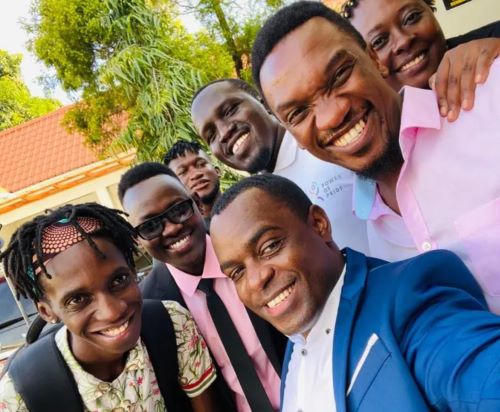
Despite the constant and considerable focus on white men, many gay men of color recognized the racism embedded in sexual desire, whether they were excluded or fetishized. As one gay Asian man noted:
I do feel like I get fetishized a lot. Online or just where older white males want to date me. And at the same time, I also experience not being liked by other people because I’m Asian and because the whole stereotype of not being desired because you’re Asian.
(012A)
More importantly, several of the men indicated that sexual racism was, indeed, a racist act and therefore should be confronted as a racist act. As one gay black man stated:
I call this the decade of the angry white male anyway. Um, it’s just, I mean, things like you even read online. “Not into black, not into black or Asian. No offense.” That’s fucking offensive. To categorically deny people. We all have our preferences. But to say friends or, to me that is the most, just, you know, disdadinable thing, and I find that, I’ve never tolerated that here.
(011B)
Similarly, other gay men of color also noted that sexual racism was an issue of racial power, not individual preference.
For many of the men in our study, resistance and change also involved attempting to create a non-white gay aesthetic that would make them feel more authentic as men of color. For example, One Latino man shared a story about a friend who eventually found a “Gay Latino” aesthetic after attempting to conform to what he believed it meant to be gay. According to this participant:
For example, there was a guy, there was a guy who once told me, he was like when he first came out, you know, he completely plucked out his eyebrows, you know, died his hari blond, bleached blond, and started just wearing extremely tight clothes even though that wasn’t him. You know. Why? Because he thought being Latino and gay, that’s what he had to look like. You know., It was until he got older that he saw that, you know what, that’s not me… I’m a guy who likes wearing my baggies and my tank top and just sticking my hair back, you know. I mean, I think as a Latino, yeah, we experience trying to find our place without having to conform to the stereotypes of what a gay male needs to look like.
(024L)
Interestingly, the man quoted above also shared that he no longer hangs out in the West Hollywood area; despite acknowledging that the area was the first place he went to explore and discover his sexuality. When another Latino man was asked to expand on his statement that he no longer dates white men or hang out in West Hollywood, he stated:
I had gone to Micky’s, Rage, Mother Load, but those are not my kind of places. I don’t like that music, techno. I think it’s just too queeny for me. I don’t like it. I’m more, I guess, just sayin a roughneck, like a Mexican. I’m more into the Latino style more. I’ve tried a little bit of Britney Spears and all that kind of, but it’s just not me. It’s just not me.
(017L)
What’s interesting is that both men quoted above framed their movement away from what they perceived was the “gay community” by first discussing the ways that the “gay community” was not necessarily welcoming of gay men of color.
Also, even when their own sexual desires were directed toward white men, some men saw changes among younger men of color. More importantly, they saw these changes as being positive for them as a whole. For example, one gay Asian man stated:
I see a lot of young Asian guys that are completely different than I was when I was that age. You know, they’re really, they have a lot more kind of outward pride, it seems. And they also have a lot more unity between them. There’s like this whole Asian brotherhood thing, and also Asians who date Asians, which was not the case when I was that age. You know, it was really all about mostly white guys that date Asian guys, and Asian guys dated white guys. Now there’s a lot of Asian guys that date Asian guys. So that in itself tells me that, you know, kind of the self-image thing is improving. You know, the self-esteem thing, because you, you know, we’re finding each other more attractive than we ever have.
(026A)
Thus, while his own sexual preference was for white men, he saw the growing number of Asian couples as having a positive impact on the way that gay Asians were perceived. So while personal preferences were slow to change, attitudes towards those preferences were becoming more critical.
Discussion
In his previous works, Adam Isaiah Green (2008) identified a number of different sexual marketplaces, which he labels sexual fields, where participants gather for the purpose, often the primary purpose, of seeking sexual partners. Within these sexual fields, certain traits carry more currency, when seeking a sexual partner. Not surprisingly, gay venues often cater to such traits. For example, a multitude of different types of bars exist, such as leather bars and sports bars. And within each type of bar, certain traits have more sexual worth than other traits. But as Green notes, sexual fields cannot be understood outside of the social context in which they develop. Not only do sexual fields represent larger societal beliefs about social worth, they actively reinforce them as well. In terms of race, the very way that the sexual marketplace for gay men is organized offers gay men of color with few opportunities for finding sexual partners in the same way that larger beliefs about race limit opportunities for people of color in general.
In order to examine the role that race plays in gay desires, we examined the sexual fields perspective through the lens of sexual racism, particularly that offered by Orne (2017). In his work, Orne offered three dimensions through which sexual racism operates; (1) structurally, (2) culturally, and (3) interactionally. In our study, we found all three dimensions of sexual racism operating simultaneously. Not only did gay men of color experience sexual racism through these three dimensions, but also understood them in that way.
When gay men of color participate in these sexual fields, it is still their race that comes to define their worth as potential sexual partners. Structurally, gay men of color understood that “gay spaces” were largely “white spaces,” and perceived them to be unwelcoming of gay men of color, leading many of them to avoid such spaces. Culturally, gay men of color recognized that to be white was to be desirable in the gay community. In fact, respondents indicated that men of color who possess more white or European physical features were considered more desirable than those who possessed more stereotypically racial features. The desirability of white men was not limited to other white men. Instead, gay men of color indicated that white men were also preferred by men of color as well. More than simply a preference for white men, there was also active exclusion of men of color by white men and by other men of color. When white men did prefer men of color as sexual partners over other white men, gay men of color understood that their desirability was based on largely stereotypical traits associated with their race. For example, Black men were favored for being sexually aggressive and possessing large penises while Asian men were favored for being sexually submissive. In neither of these cases were men of color considered more desirable because they were considered to be physically more attractive than white men. Thus, gay desire is characterized by high levels of sexual racism that marks gay men of color as being less sexually desirable than gay white men or only desirable specifically because they are a racial fetish. Finally, gay men of color experienced sexual racism interactionally in their everyday experiences with gay white men.
The racial hierarchy of desire had several negative consequences for gay men of color. First, gay men of color often reported having to “play the game,” in order to find sexual partners. That is, they often engaged in sexual activity for the pleasure of white sexual partners, making their own sexual needs secondary. More damaging was the impact that sexual racism had on the self-esteem of gay men of color. Gay men of color often felt marginalized and frustrated in the larger gay community as a result of their sexual exclusion. Thus, sexual racism had both a sexual and social consequence for gay men of color.
Despite these problems, many gay men of color reported ways that they actively confront sexual racism. A primary method was to challenge sexual desires based on racial fetishes. But a more significant change was in the ways that gay men of color began to see other men of color as potential sexual partners. In fact, several of the men, even those who preferred white men, viewed the rising and visible number of gay men of color dating each other as a challenge to the belief that only white men were sexually desirable.
Examining sexual fields theory through the lens of sexual racism demonstrates that larger social structural factors such as race directly influence personal interactions at the micro level. More importantly, these structural factors often cancel out the other sexual norms and values that may be found within any given sexual field. In fact, as our research demonstrates, much of what is considered to be unique preferences within sexual fields such as styles of dress, body sizes, etc. are also raced. Thus, what is considered desirable within sexual fields can also be said to have a racial basis in that certain types of clothes, certain body shapes, etc. are not race-neutral. Rather, larger societal beliefs about race directly influence what is found to be attractive within sexual fields. Future work should explore other macro factors such as class and gender that may also influence what is considered desirable across different sexual fields. For example, how might the glorification of “gym bodies” during Gay Pride events be a reflection of social class values? How might the ability to “dress the part” represent beliefs about social class? How might beliefs about gender influence the types of bodies that are considered desirable? How does the desire for certain type of bodies both represent and reinforce gender ideologies? It should go without saying that an intersectional lens would also help to illuminate how larger beliefs about race, class, gender, etc. are challenged by non-dominant group members. For example, Ocampo’s (2012) study clearly demonstrates that what is considered appropriate dress is not universal, but hints at the possibility that despite how one dresses, it is linked to larger beliefs about masculinity, albeit differently conceptualized. Examining other ways that larger beliefs about race, gender, and class would help make other micro/macro level connections to help scholars better understand how larger societal factors impact personal interactions. A different line of inquiry might examine the ways that sexual fields can be sites of resistance rather than simply sites of desire. For example, in Crockett’s (2016) work, it is clear that organizations that initially might begin as those facilitating personal interactions can also be used to address larger societal issues by its members. Similarly, Ocampo’s (2012) work also demonstrates that gay men of color actively contest larger narratives about desirability. Thus, it is possible that sexual fields are not simply sites where dominant beliefs about desirability go unchallenged. Future work focusing on not only the sexual nature of sexual fields but the political potential of “sites of desire,” would help bring the sociological study of desire into new arenas.
References
- Armstrong Elizabeth A. 2002. Forging Gay Identities: Organzing Sexuality in San Francisco, 1950–1994. Chicago: University of Chicago Press. [Google Scholar]
- Bedi Sonu. 2015. “Sexual racism: Intimacy as a matter of justice.” The Journal of Politics 77(4): 998–1011. [Google Scholar]
- Berubé Allen. 2001. “How Gay Stays White and What Kind of White it Stay” Pp. 234–265 in The Making and Unmaking of Whiteness, edited by Rasmussen Birgit B., Klinenberg Eric, Nexica Irene J. and Wray Matt. Durham, NC: Duke University Press. [Google Scholar]
- Bonilla-Silva Eduardo. 2002. “The linguistics of color blind racism: How to talk nasty about blacks without sounding ‘racist’.” Critical Sociology 28(1/2): 41–64. [Google Scholar]
- Buggs Shantel G. 2017. “Dating in the Time of #BlackLivesMatter: Exploring Mixed-race Women’s Discourses of Race and Racism Sociology of Race and Ethnicity 3(4): 538–551. [Google Scholar]
- Callander Denton, Newman Christy E., and Holt Martin. 2015. “Is sexual racism really racism? Distinguishing attitudes toward sexual racism and generic racism among gay and bisexual men.” Archives of Sexual Behavior 44(7): 1991–2000. [PubMed] [Google Scholar]
- Callander Denton, Hold Martin, and Newman Christy E.. 2016. “‘Not everyone’s gonna like me’: Accounting for race and racism in sex and dating web services for gay and bisexual men.” Ethnicities 16(1): 3–21. [Google Scholar]
- Corbin Juliet and Strauss Anslem. 1990. “Grounded Theory: Research, Procedures, Canons, and Evaluative Criteria.” Qualitative Sociology 13(1): 3–21. [Google Scholar]
- Crockett Jason L. 2016. “Black and white men together: The case of the disappearing organizational narrative of racial sexual orientation.” Making Connections: Interdisciplinary Approaches to Cultural Diversity 16(2): 88–116. [Google Scholar]
- Ellingson Stephen, Laumann Edward O., Paik Anthony, and Mahay Jenna. 2004. “The Theory of Sex Markets” Pp. 3–38 in The Sexual Organization of the City, edited by Laumann EO, Ellingson S, Mahay J, Paik A, and Youm Y. Chicago: University of Chicago Press. [Google Scholar]
- Green Adam I. 2008. “The Social Organization of Desire.” Sociological Theory 26(1): 25–50. [Google Scholar]
- Green Adam I. 2011. “Playing the (Sexual) Field: The Interactional Basis of Systems of Sexual Stratification.” Social Psychology Quarterly 74(3): 244–266. [Google Scholar]
- Han Chong-suk. 2007. “They Don’t Want to Cruise Your Type: Gay Men of Color and The Racial Politics of Exclusion.” Social Identities 13(1): 51–67. [Google Scholar]
- Han C Winter 2015. Geisha of a Different Kind: Race and Sexuality in Gaysian America. New York: New York University Press. [Google Scholar]
- hooks bell. 1992. Black Looks: Race and Representation. Boston: South End Press. [Google Scholar]
- Jackson Peter A. 2000. “That’s What Rice Queens Study!: White Gay Desire and Representing Asian Homosexualities.” Journal of Australian Studies 65: 181–188. [Google Scholar]
- Lundquist Jennifer H. and Lin Ken-Lou. 2015. “Is love (color) blind? The economy of race amond gay and straight daters.” Social Forces 93(4): 1423–1499. [Google Scholar]
- Martin John L. and George Matt. 2006. “Theories of Sexual Stratification: Toward an Analytics of the Sexual Field and a Theory of Sexual Capital.” Sociological Theory 24(2): 107–132. [Google Scholar]
- McBride Dwight. 2005. Why I Hate Abercrombie & Fitch: Essays on Race and Sexuality. New York: New York University Press. [Google Scholar]
- Nagel Joan. 2003. Race, Ethnicity, and Sexuality: Intimate Intersections, Forbidden Frontiers. London and New York: Oxford University Press. [Google Scholar]
- Ocampo Anthony C. 2012. “Making masculinity: Negotiations of gender presentation among Latino gay men.” Latino Studies 10(4): 448–472. [Google Scholar]
- Orne Jason. 2017. Boystown. Chicago: University of Chicago Press. [Google Scholar]
- Paul Jay P., Ayala George, and Choi Kyung-Hee. 2010. “Internet sex ads for MSM and partner selection criteria: The potency of race/ethnicity online.” The Journal of Sex Research 47(6): 528–538. [PMC free article] [PubMed] [Google Scholar]
- Phua Voon Chin and Kaufman Gayle. 2003. “The crossroads of race and sexuality: Date selection among men in internt ‘personal’ ads.” Journal of Family Issues 24(8): 981–994. [Google Scholar]
- Rafalow Matthew H., Feliciano Cynthia, and Robnett Belinda. 2017. “Racialized femininity and masculinity in the preference of online same-sex daters.” Social Currents 4(4): 306–321. [Google Scholar]
- Robinson Brandon A. 2015. “‘Personal preference’ as the new racism: Gay desire and racial clensing in cyberspace.” Sociology of Race and Ethnicity 1(2): 317–330. [Google Scholar]
- Rowlson Alex. (October 12, 2011). “Not just a preference.” FAB Magazine; Available online at http://www.fabmagazine.com/story/not-just-a-preference. [Google Scholar]
- Seidman Steven. 2002. Beyond the Closet: The Transformation of Gay and Lesbian Life. New York and London: Routledge. [Google Scholar]
- Sontag Susan. 1972. “The double standard of aging.” The Saturday Review, September 1972, pp. 29–38. [Google Scholar]
- Smith Jesus G. 2014. “Getting off online: Race, gender, and sexuality in cyberspace” Pp. 109–120 in Illumination How Identities, Stereotypes and Inequalities Matter through Gender Studies, edited by Farris D, Davis M, and Compton D. Dordrecht: Springer. [Google Scholar]
- Smith Jesus G. 2017. “Two-faced racism in gay online sex” Pp. 134–146 in Sex in the Digital Age, edited by Nixon PG and Dusterhoft IK. New York: Routledge. [Google Scholar]
- Stember Charles H. 1976. Sexual Racism: The Emotional Barrier to an Integrated Society. New York: Elsevier. [Google Scholar]
- Stevenson Howard C. 1994. “The Psychology of Sexual Racism and AIDS: An Ongoing Saga of Distruct and the ‘Sexual Other’.” Journal of Black Studies 25(1): 62–83. [Google Scholar]
- Teunis Niels. 2007. “Sexual Objectification and the Construction of Whiteness in the Gay Male Community,” Culture, Health & Sexuality 9(3): 263–275. [PubMed] [Google Scholar]
- Walters Suzana D. 2014. The Tolerance Trap: How God, Genes, and Good Intentions are Sabotaging Gay Equality. New York: New York University Press. [Google Scholar]
- Whittier David K. and Simon William. 2001. “The fuzzy matrix of ‘my type’ in intrapsychic sexual scripting.” Sexualities 4(2): 139–165. [Google Scholar]
- Wilson Patrick A., Valera Pamela, Ventuneac Ana, Balan Ivan, Rowe Matt, and Carballo-Diéguez Alex. 2009. “Race-based Sexual Stereotyping and Sexual Partnering Among Men Who Use the Internet to Identify Other Men for Bareback Sex.” The Journal of Sex Research 46(5): 399–413. [PMC free article] [PubMed] [Google Scholar]
- Yancey George. 2002. “. “Who Interracially Dates: An Examination of the Characteristics of Those Who Have Interracially Dated.” Journal of Comparative Family Studies 33(2): 179–190. [Google Scholar]
Originally published by The Social Spectrum 38:3 (07.06.2018, 145-161), republished by the National Library of Medicine to the public domain.
